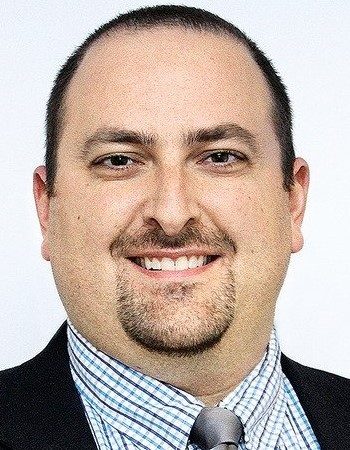Message from the Chair
A sustainable world enabled through the sustainable practice and use of chemistry.
CES’s vision statement (above) is both lofty and difficult. As a good vision statement should be, it is one that is virtually impossible to achieve, yet provides direction and optimism for the world as we wish it could be.
Sustainability is a hotly debated issue in the chemical world. If you asked 100 people to define the word ‘sustainability’ I suspect you’d get 100 different definitions. In fact, I bet you’d be hard pressed to find agreement on a definition within the members of CEs itself. For me, this is one of the most exciting parts of working with ACS and the CES community. We find ourselves in the middle of a deeply complicated, absolutely critical issue facing the chemical community today. In the context of a changing world, what should the future of the chemical enterprise look like? Moreover, what are we doing to make sure we end up somewhere we want to go, not just where we happen to end up?
A sustainable world requires generational transitions: in attitudes, in practices, in technology. Existing technology and chemicals challenge us today. Evolving technology and new chemicals will challenge us tomorrow. CES’s duty was and is to address these.
To that end, CES is collaborating with as many other areas of ACS as possible to achieve our vision of the future we aspire to.
- We are working closely with the Green Chemistry Institute to better integrate green chemistry thinking into our Society, including integrating the UN Sustainable Development Goals into the divisions and operations of ACS.
- On behalf of the Society, CES is leading the theme organizing for the upcoming National Meeting in San Diego, CA.
- We are working closely with many other ACS governance committees and divisions on a wide variety of projects.
Additionally, in 2019, CES will lead the review and rewrite of ACS’ policy statements on climate change and chemical risk assessment. These policy statements are critical tools for ACS to engage with decision makers and policymakers around the world, and we take the role we play in developing them seriously.
Finally, CES continues to think through the future of sustainability for the Society. We are developing a great deal of work around the critical issue of water. We are examining the issues of ocean plastics, electronics and electronic waste, which are clearly not sustainable as it is now. And we continue to keep our eyes to the horizon, looking for those things that stand in the way of us achieving our vision for the world.
CES does its work best when we collaborate with as many people as possible in pursuit of that vision. I invite you to join us in that effort. Please peruse our website, participate in our programs, and reach out to me directly if you have any questions or want to volunteer. Decisions are made by those who show up. I invite you into the room where it’s happening, and help us achieve a more sustainable world through the transformative power of chemistry!
Christopher W. Avery, Ph.D.
Chair, Joint Board-Council Committee on Environment and Sustainability
American Chemical Society

Chris Avery, Ph.D.
Current Chair, CES
Photo credit: Chris Avery
CES Comments in C&EN
From the Chair
- Avery, Chris. CEI seeks input on environmental impact of single-use plastics. August 17, 2020.
- Avery, Chris. How to get involved now in ACS San Diego. February 18, 2019.
From the Past Chair
- Pence, Laura. Chemists and Policy Bridging the Gap (PDF), Sept 22, 2014
- Pence, Laura. Celebrating ACS's Century of Environmental Chemistry (PDF), June 23, 2014
From the Vice Chair
- Fowle, John. Improving Toxicity Testing for Better Decision-Making (PDF), July 13, 2015

